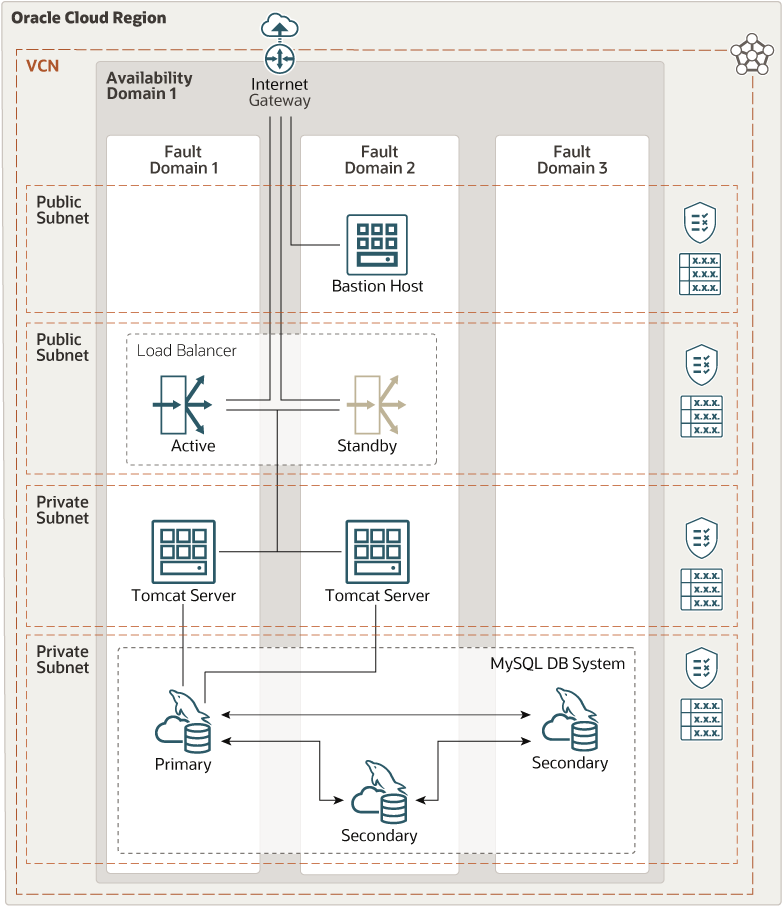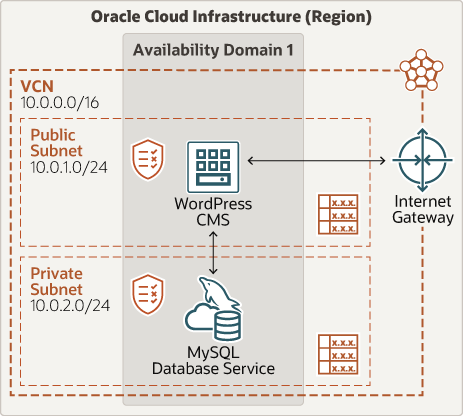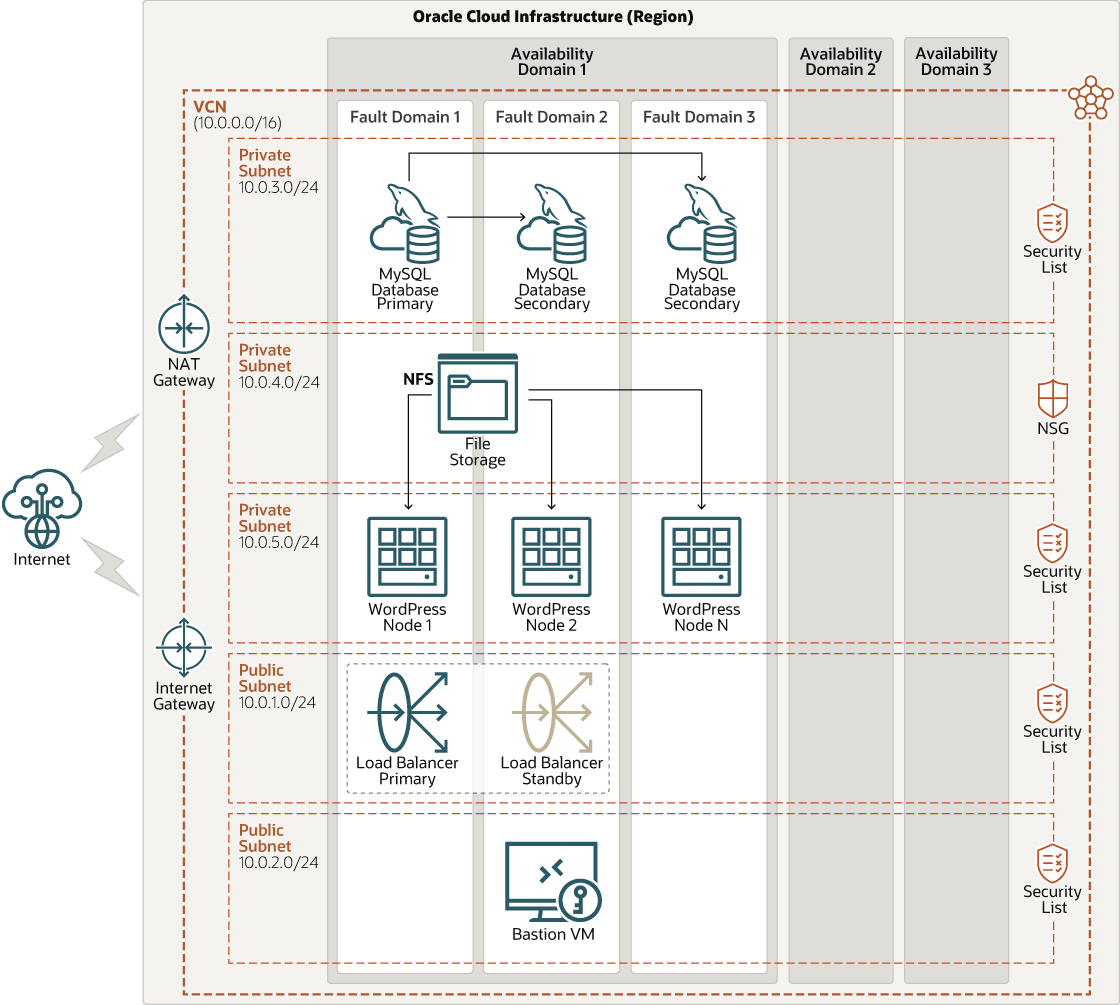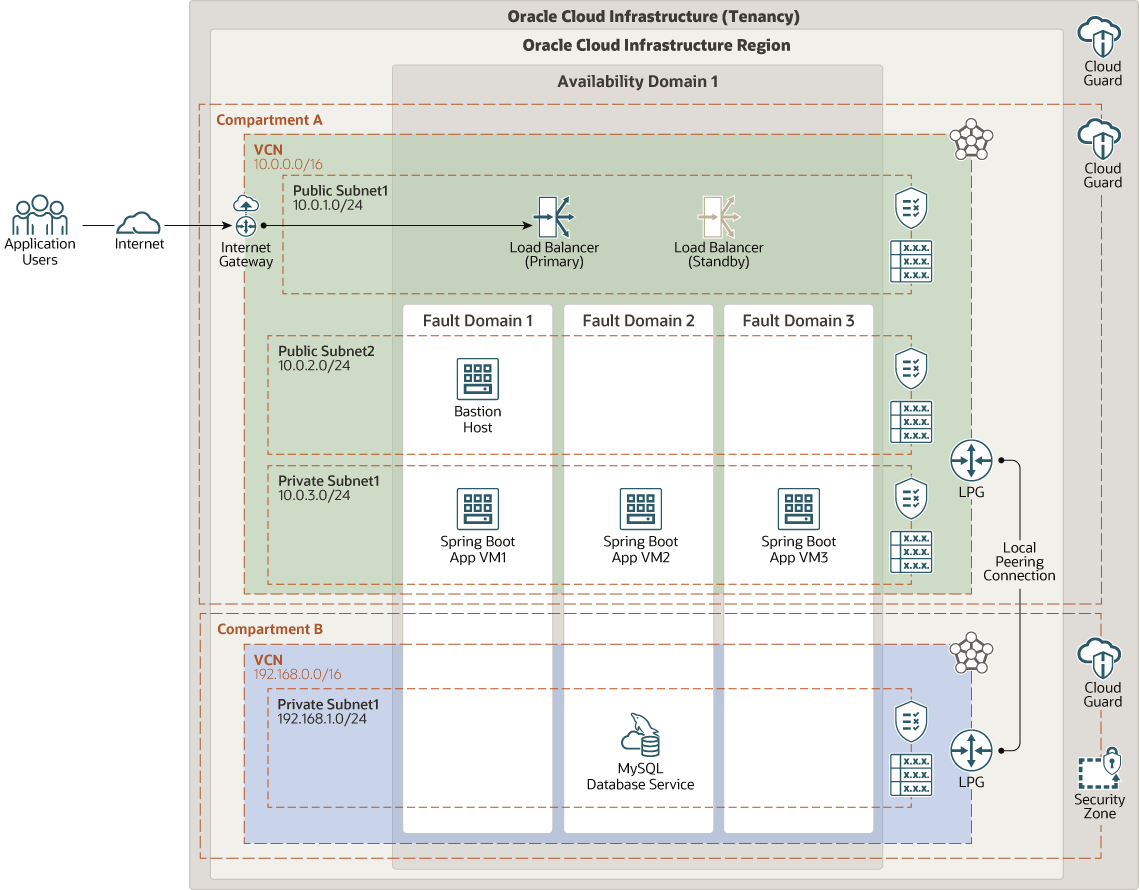Learn About MySQL Database Service Deployments
The deployment architectures that follow provide an overview of each architecture.
Links to the full reference architectures are provided in the Explore More section. The reference architectures provide additional component detail, recommendations, considerations, and deployable Terraform code.
Deploy Apache Tomcat Connected to MySQL Database Service
The reference architecture contains a load balancer, an application tier with Apache Tomcat, and a database tier with an HA-enabled MySQL Database Service.
The components are located in different subnets. The load balancer is in a public subnet. The Tomcat servers share a private subnet and the database is in its own private subnet. All external access is through the load balancer via an Internet gateway. The HA-enabled MySQL Database Service is an abstraction of a cluster. It has three MySQL instances but with a single endpoint. One instance is the Primary and the other two instances are the Secondaries. The Primary has the single endpoint, allowing reads and writes to the database. The Secondaries receive replicated data from the Primary. No direct access is allowed to the Secondaries. In case of failure or manual switchover, one of the Secondaries becomes the new Primary and the endpoint is redirected to it. This means that the endpoint IP address never changes and there is no need to update the application.
A sample application that shows application session management using the database is included.
The following diagram illustrates this reference architecture.

Description of the illustration architecture-deploy-tomcat-mds-ha.png
Set Up a WordPress CMS Connected to a MySQL Database in the Cloud
Wordpress is a Content Management System (typically used for Blogs and related sites) that connects to MDS for its database back-end.
It can be deployed in a single node architecture, or as part of a multi-node configuration, providing high availability.
The following diagram illustrates a single node architecture.

Description of the illustration deploy-wordpress-cms-mysql-dbs.png
deploy-wordpress-cms-mysql-dbs-oracle.zip
For a more complex multinode high availability environment, you can deploy WordPress nodes in multiple fault domains with primary and standby load balancers and shared Oracle Cloud Infrastructure File Storage service (managed NFS service) for all WordPress nodes.
The following diagram illustrates a multinode architecture.

Description of the illustration oci-arch-wordpress-mds.png
Deploy the Spring Boot Framework on Oracle Cloud Infrastructure With MySQL Database Service
This multitier reference architecture includes the infrastructure resources and the Spring Boot framework used to deploy highly available applications on Oracle Cloud Infrastructure.
The architecture deploys a load balancer, a bastion host, three virtual machines (VMs) where the application is installed, and Oracle MySQL Database Service.
The architecture includes two compartments, both of which have Cloud Guard enabled to provide maximum security based on Oracle's security best practices. In addition, the compartment where Oracle MySQL Database Service is deployed is a security zone compartment.
Components are located in different subnets and fault domains to provide high availability. Oracle MySQL Database Service is accessed only through the bastion host and the application VMs are accessed through the load balancer.
The following diagram illustrates this architecture.
